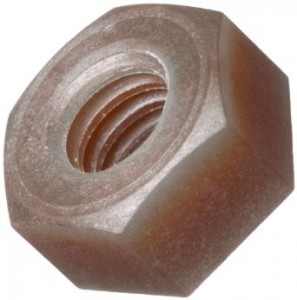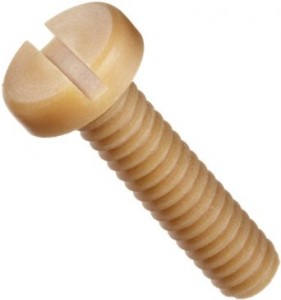Plastic materials: ULTEM Plastic Fasteners
Dec 6th 2023
ULTEM ® is a family of Polyetherimide (PEI) themoplastics, manufactured by SABIC, and originally developed by General Electric Plastics Division).
ULTEM (and PEI in general) is an amorphous thermoplastic with characteristics similar to the thermoplastic material PEEK. Relative to PEEK, ULTEM is less expensive, but less agile in characteristics in impact strength and temperature use ranges.
ULTEM® Grades and Colors
ULTEM ® 1000 – the standard grade
- Resistant to UV and gamma radiation.
- High dielectric strength, natural flame resistance, and extremely low smoke generation.
- Performs well in hot air and water environments.
- Performs in continuous use to 340 °F (170 °C)
- Retains 85% of its tensile strength after 10,000 hours of immersion in boiling water and 100% of its tensile strength even after 2,000 cycles in a steam autoclave at 270°.
- ULTEM 1000 has typical thermal conductivity of 0.22 W/(mK) (but some sources give 0.122 W/(m.K)).
- FDA and USP Class VI compliant and USDA and NSF approved.
- Standard color: amber and transparent.
ULTEM ® 2300 – the 30% glass-reinforced grade of Ultem
- Glass reinforcement provides greater tensile strength and rigidity than ULTEM® 1000 , while also improving dimensional stability.
- Standard colors: green and tan.
General Properties of ULTEM® Plastic Fasteners
- High strength and continuous performance from -40° to 340° F
- Heat and flame resistance
- High chemical resistance
- High dielectric strength
- Low smoke output
 Where is ULTEM® used?
Where is ULTEM® used?
ULTEM Machine Screw
ULTEM® applications are used within medical, electronic/electrical, microwave, automotive, and aircraft industries.
As a material within plastic fasteners, ULTEM® is typically used in medical and chemical instrumentation due to their heat resistance, solvent resistance and flame resistance.
Heat Resistance
ULTEM resins are used in chemical and medical experimentation. Since it is flame resistant and heat resistant, this makes for a chemical base that can neutralize any elevated results in an experiment that compounds multiple acids odd to its molecular component. For example, ULTEM can heat up considerably quick in electrical fields and is not suitable for microwave insulating use. However, it can be molded or shaped into the appropriate structure needed without destroying its matter. It performs in temperatures between 300°F – 350 °F (100°C – 180 °C).

Radiation
Depending on what the plastic fasteners will be used for, they may make contact with some type of radiation, which can influence the plastic. Electromagnetic waves range from large radio waves, through short normal waves of daylight UV radiation, to very short gamma rays. Rule of thumb: the shorter the wavelength, the greater the damage to the properties of the plastic.
Two types of radiation:
UV Radiation
- Comes from sunlight
- Effective in open-air, unprotected applications
- If conditions reach dangerous measures, plastic will yellow and brittle depending on the level of radiation
- Adding carbon black is affordable and will prolong the life of the plastic
Gamma
- Used in X-ray application in medical diagnostics, sterilization, and radiation therapy
- If conditions reach dangerous measures, plastic will brittle depending on the exposure time to radiation, and the amount of radiation absorbed
- Ultem™ contains sulfur polymers which provide resistance to X-rays and gamma radiation
Summary
When choosing components and fasteners for manufacturing and production, consider the application, the environment of the finished products and the characteristics of the materials available. Plastics, and especially some of the advanced composite materials, make a great choice for many applications and offer exceptional strength and resistance to wear.
While ULTEM® plastic fasteners are a fine choice, it’s not used in every application. If you have any questions on the properties of plastic fasteners or specifically about ULTEM plastic fasteners and their use within your application, please do not hesitate to contact us. We’re here to help

